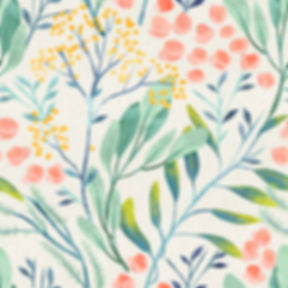
How to Weave in Yarn Ends
So when would you need to use this 'weaving in' process?
For every knitting project, you will create at least 2 yarn tails; one at the beginning and one at the end.
Obviously you don't want these yarn ends hanging loose, so they need to be 'woven in' to your knitting to hide them and to secure them (to prevent unravelling).
This is something you will no doubt have to do for every knitting project, and the more colours/balls of yarn you use in a project, the more yarn tails you will need to weave in.
You will just need a yarn needle to do this. Simply thread the yarn tail into the needle, and then follow the path shown in this video to sew/weave the yarn into your knitting without it being very noticeable:
The diagram I use in the video represents how garter stitch looks (either side), or how stockinette stitch looks on the back. If you are knitting a different kind of stitch, then your knitting won't look exactly like the diagram but the idea is the same. And that idea is to weave in the yarn tail by following yarn that has already been knitted.
Knitting is formed from a series of loops (have a look at this page to learn more) and you should follow the path of one of these loops with your needle when weaving in. This will allow the yarn to blend in better.
At the back of your knitting, as in the diagram below, you will see a series of 'U' shapes (which are the bottoms of loops) and 'rainbow' shapes (which are the tops of loops). You will weave in yarn tails by taking your needle under these shapes in your knitting.
The truth is that there are many ways of weaving in, and as long as the yarn is secured then you can use whatever method you like. The only difficulty really is to make it look neat, as the process itself is very simple.

When you have finished knitting with a yarn, be sure to leave a tail of at least 8", or preferably more like 12", to give you enough length to weave in. It is better to have too much yarn to work with than too little.
The first thing you do is thread the yarn tail into a yarn needle. Then you follow the path as detailed here (see diagram above for reference):
- Take your needle under the 'rainbow' shape labelled A. This should be the nearest 'rainbow' shape to where the yarn tail leaves the knitting.
- Then take your needle up and under the 'U' shape labelled B.
- Then down under C, and finally down under A to complete a looped path.
An important tip is to not pull tight on the yarn as you weave it in, as this could pucker your knitting. Try to keep the tension of the yarn tail the same as the tension of the surrounding knitted yarn.
You then repeat this looped path horizontally along the knitted rows, as follows:
- Up and under D, which will be adjacent to A.
- Up and under E (which is also C), down under F and down under D. And that is another loop completed.
It's up to you how many loops you follow, but as a rough guide, try and weave horizontally across your knitting for about 2".
Some people weave one way for about 1" and then weave back in the other direction for about 1" (following a looped path above or below where they just wove for the first 1").
As long as the yarn tail is secured and it looks neat enough for you to be happy with, then it's a good method!
As a last step, you cut off any excess yarn.
Note: Yarn naturally grips onto itself especially if it is a fluffier type of yarn like wool, so you don't need to worry about the tail falling out and the knitting unravelling.
If you are worried - perhaps because you are using a slippy/silky type yarn - then just weave the tails further into the knitting.
Weaving in always worried me because I thought it would be complicated or take too long, but you shouldn't get stressed about this process at all...just make sure to keep a yarn needle handy :)
Thanks for reading!
